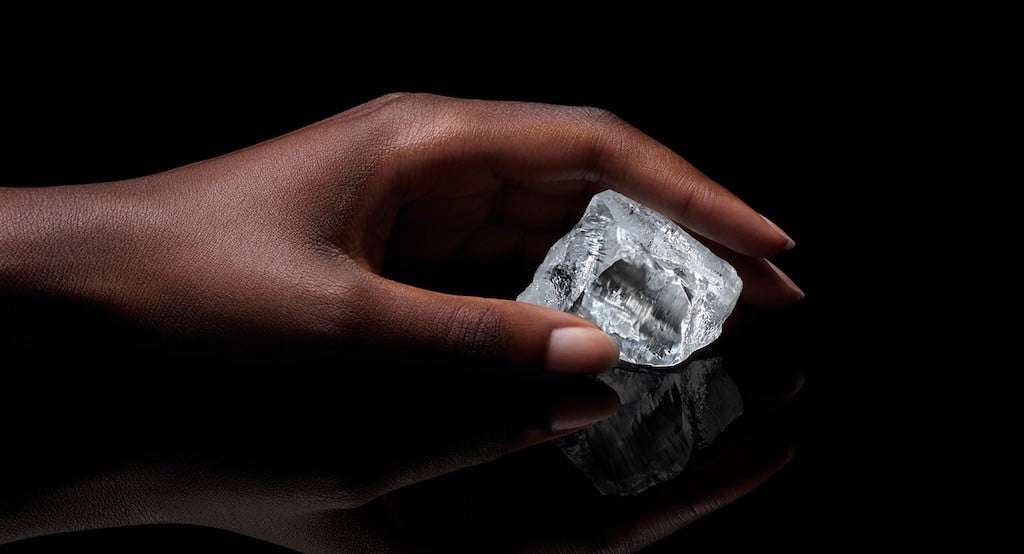Do mined diamonds have a place in a market increasingly demanding transparency and ethics? According to HB Antwerp, not only do they have a place, they’re setting new standards, creating new opportunities, and redefining what luxury means.
Rafael Papismedov spent more than two decades in business development helping to finance infrastructure projects, refineries, and mining operations across Africa. Diamonds were on the radar, but they weren’t a focus. But these days, they’re all-consuming. Papismedov co-founded HB Antwerp in 2020—a Belgium-based mission-led operation aimed at redefining diamond mining with novel blockchain transparency and a “mine to market” philosophy that just might make the diamond industry one of the most ethical, equitable, and sustainable of all.
Papismedov says living in Antwerp, the Belgian port city known for its diamond district, “you see diamonds all the time; you hear diamonds all the time,” he tells Ethos. He knew about the human rights issues and “blood diamonds” well before the 2006 Edward Zwick film on the issue starring Leonardo DiCaprio brought it to light. Papismedov’s work in Africa also highlighted how mining has a positive impact in a number of countries with economies and local communities reliant on the trade.
“While in places like Sierra Leone or Angola there were wars—and in those wars, diamonds are used because of the high value as is a currency—you have amazing stories of nations like Botswana that are fully dependent on diamonds,” Papismedov says. Nearly half of Botswana’s GDP comes from the country’s diamond industry, he says. “It is the most prosperous, most democratic and most advanced nation in Africa.”
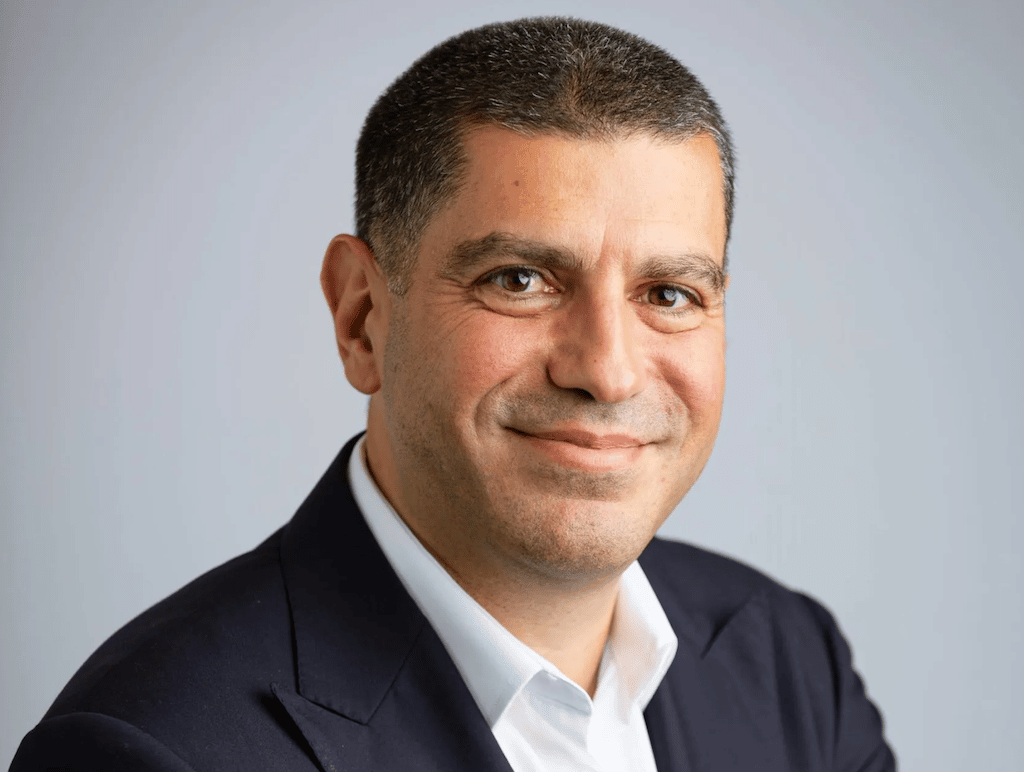
There are industry-wide efforts in place like the Kimberley Process, established in 2003, which has reduced diamond sourcing from conflict regions by more than 99 percent, the group says. The Kimberly Process cites all major diamond-producing, exporting, and importing countries, including 59 participants representing 85 countries (the European Community counts as a single participant).
There is also the Responsible Jewelry Council, although it recently lost key members over its ties to Russia. Last October, Kering and Cartier launched the sustainability-focused Watch and Jewelry Initiative 2030, aimed at standardizing processes to help the industry reduce its carbon footprint.
Lab-grown diamonds
But the biggest game-changer in the industry has been the uptick in lab-grown diamonds, touted as both sustainable and more ethical alternatives to mined diamonds. Lab-grown diamonds are identical to mined in all critical ways (cut, color, clarity, and carat). They’ve earned support from the Blood Diamond star DiCaprio himself, who invested in lab-grown diamond giant Vrai last year, and companies like Aether, which is marrying luxury and sustainability in its carbon-captured diamonds.
Last week, LVMH became one of the first luxury labels to invest in lab-grown diamonds. Historically, luxury jewelry brands including Cartier, Chopard, Bulgari, and Tiffany & Co., have eschewed lab-grown diamonds even though those grown in a lab share the same characteristics as mined diamonds.
Richemont, parent company to Cartier, says lab diamonds don’t have any “history.” It’s the rarity and uniqueness of mined diamonds that make them a luxury product.
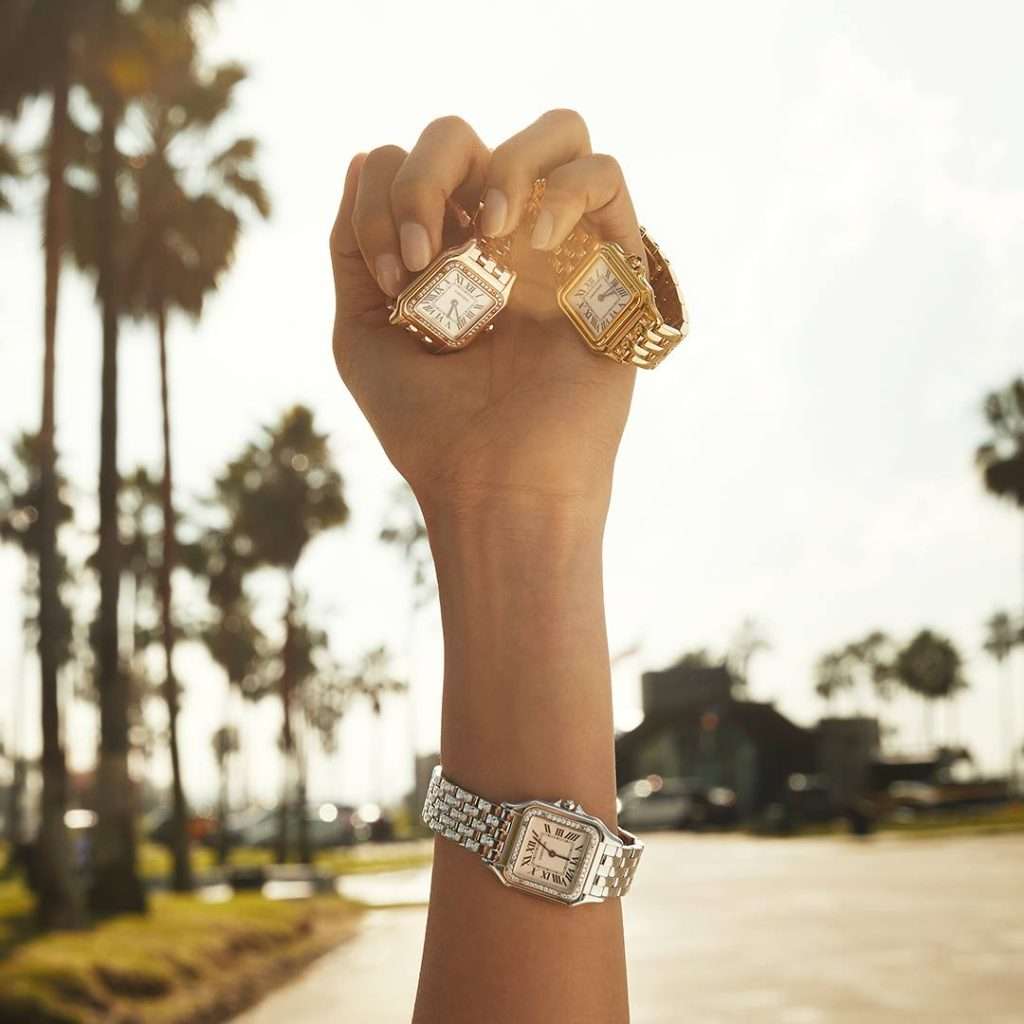
“[Lab-grown diamonds] were made two days before [purchasing],” Cartier chief executive Cyrille Vigneron shared in an interview for the Business of Fashion and McKinsey’s “State of Fashion Watches and Jewellery” report last year.
“Many customers will still reject lab-grown diamonds as they’ve lost their singularity and lost the fact that they were made by the Earth millions of years ago,” he said. “We make a promise of naturality and traceability to our clients. In the end, this might put into question the value given to diamonds compared to other stones.”
Indeed, while lab-grown diamonds are more affordable than ever, that may come to hurt the industry as they continue to push up the market value for the rarer mined diamonds, putting market parity forever just out of reach.
Diamond mining
According to Papismedov, helping consumers better understand the diamond mining industry, may also help make it a more equitable, sustainable, and profitable industry, adding further value to mined diamonds.
This is particularly important as Africa, where most diamond-producing countries are located, is expected to see its population double by 2050. According to the World Bank, the fertility rate for women in Sub-Saharan Africa is 4.7—the highest in the world.
Further complicating things is the inherently messy nature of the diamond industry to begin with; diamonds are mined in one part of the world and trade hands several times elsewhere before landing in jewelers in the wealthy pockets.
“Mother Nature took two to three billion years to create a diamond,” Papismedov says. “And then once mined, this diamond becomes a hot potato; one trader is passing to the other and another—and everybody’s trying to make money.”
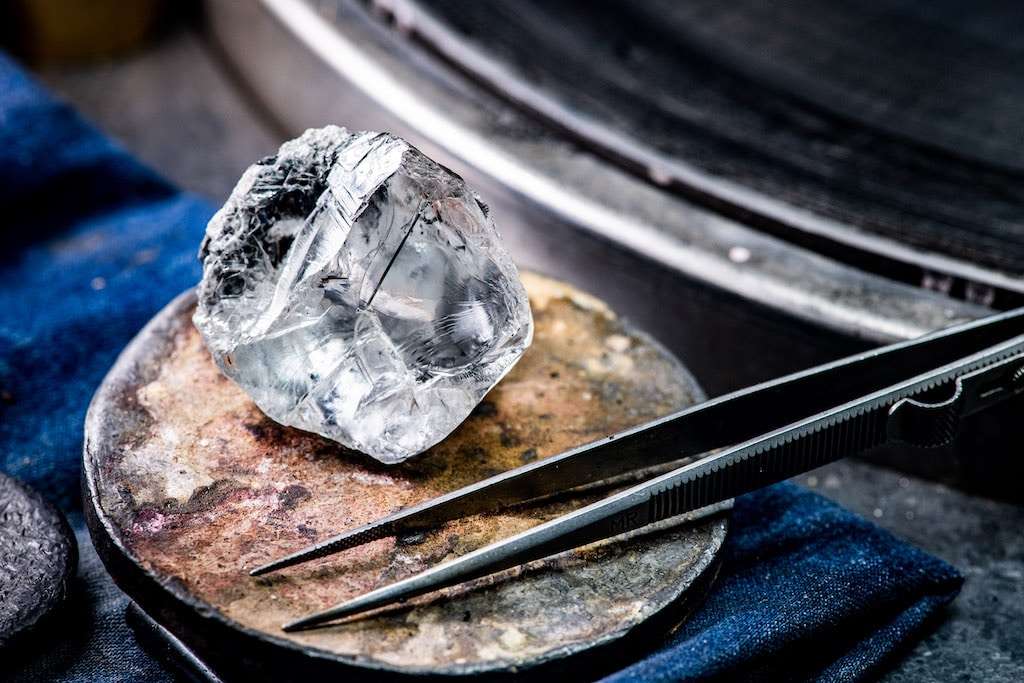
This makes it nearly impossible to trace the diamond to its source—a growing concern for today’s conscious consumers. A recent survey found millennials and Gen Z shoppers want traceability and sustainability metrics for the products they purchase, especially high-ticket items. They’re also willing to pay more for these guarantees, according to the findings from diamond brand De Beers.
The current model also poses other challenges, particularly to the communities where diamonds are being mined. It’s why HB Antwerp and its retail arm, Signum, which involves consumers in the process of co-creating jewelry from rough diamonds, are focusing on closing the loop on diamond mining.
Botswana
HB Antwerp has partnered with miners in Botswana where it hopes to keep most of the process, empowering the community and offering consumers 100 percent transparency and traceability. Blockchain is finding its way into a number of industries, and diamond mining is no different. Here, though, it’s out to completely transform an industry.
In participating mines, once a diamond is plucked from the earth, it’s tracked by HB Antwerp’s GPS. The ultimate goal is tied to storytelling; this means pictures and bios of the miners who extracted the diamond, and pictures of the rough gems before they’re transported. This gives provenance incredible value compared to current models and the inherent anonymity of the diamond industry.
“You buy a diamond now and it’s just undifferentiated stone in a sea of diamonds in a display case,” Papismedov says. “It has no story.”
But what really excites Papismedov about HB Antwerp’s approach is just how much power it gives the miner—for him, that’s the real story. “We told [the miners in Botswana], ‘don’t give us a price,'” he says. HB has invested millions into technology that lets the AI determine the scientific outcome of each diamond. “Once we agree on this outcome, we will tell you the estimated value, and we will process [the rough diamond] based on orders we have from the largest [jewelry] brands in the world.”
“Why does a diamond need to travel first to Antwerp then to Dubai then to Hong Kong? Then go to India? It’s not sustainable.”
-Rafael Papismedov, HB Antwerp
This, Papismedov says, means diamonds fetch higher prices for the miners, and leaves more satisfied and invested consumers on the retail side. Papismedov sees this as the future of the industry; jewelers will bid on diamonds before they’re polished and traded, sometimes before they’re even fully out of the earth. And when they are traded, this will be done by the communities closest to the mines.
Current processes involve mining in countries across Africa, as well as Canada, Russia, and Australia. Those diamonds are then auctioned. They’re often then sent to India, a top destination because labor there for polishing is cheap. The diamonds are then traded around the world, like in Antwerp’s diamond district, before landing in a jeweler’s hands. “Why does a diamond need to travel first to Antwerp then to Dubai then to Hong Kong? Then go to India? It’s not sustainable,” Papismedov says.
It’s also not the most ethical. He points to Botswana, where HB Antwerp is focused. The population there is just under 2.4 million. Approximately 800,000 people in India work in the diamond industry, mostly polishing, which Papismedov points out is “not even a fraction” of the country’s GDP. But shifting even 25 percent of that labor to Botswana could offer a significant economic boom to the country where the average age is just 24 years old. This could help the younger population afford school and housing, and offer support for young families.
In February, HB Antwerp announced a five-year partnership with the Botswana International University of Science and Technology, offering scholarships and innovations to help create job opportunities in the region. Last year, it partnered with the incubator WomHub to recruit Botswanan engineering students.
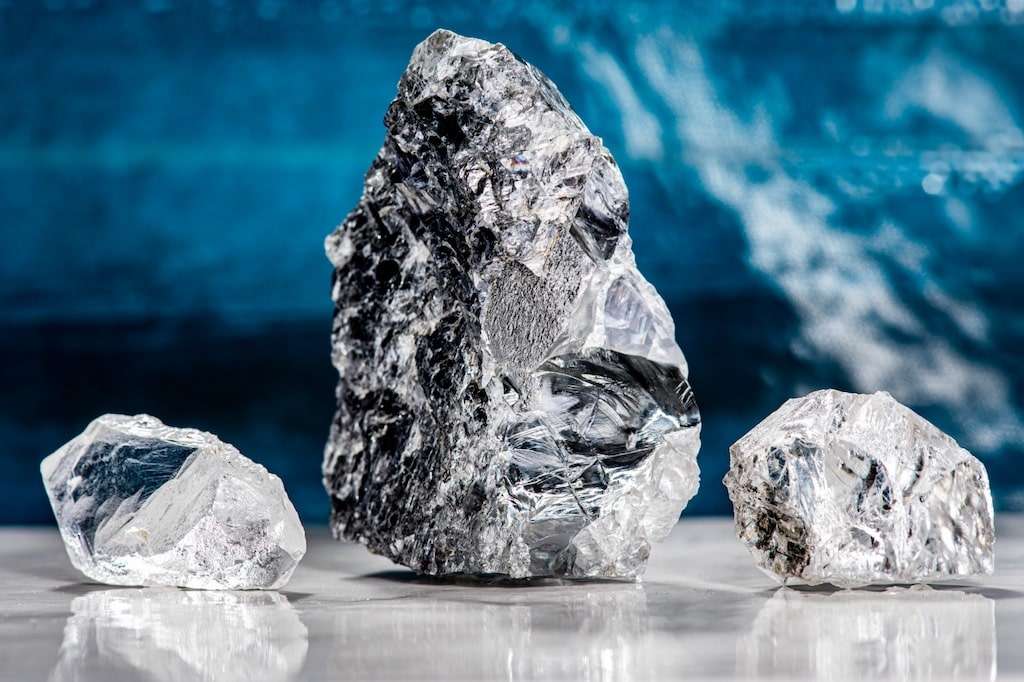
“While everybody’s trying to make money, the procedure is wrong,” Papismedov says. He explains it as an interaction of “winner and loser” because it often means buying something for less than it should have cost, or sometimes more than it should have cost. “So there was never a win-win situation. We said the experience has to be completely different.”
HB Antwerp has developed relationships with Botswana miners, government, and heads of state in other countries interested in learning about how the technology could help boost the GDP and help evolve the industry beyond the Kimberley Process. Conflict-free is just the beginning, he says, the real goal is to give African nations the power to control their diamond trade through to the consumer.
Blockchain transparency
There have been efforts before, like keeping auctions in the country where diamonds are mined, which Botswana began to require about seven years ago. It was aimed at boosting the local economy. The theory was traders would come to the country, stay in hotels, eat, explore, and support the local economy. But Papismedov says it failed to live up to expectations, with people coming for a single night, buying their diamonds, and leaving.
Through its system, HB Antwerp has transitioned the country’s participating mines away from the auction, and increased the market price per diamond by more than 45 percent, he says. Part of the reason is provenance. There’s no longer a question where the diamonds come from in HB Antwerp’s scenario. Consumers get peace of mind, and there’s value in that. And the goal is for other countries to follow. Papismedov sees it as unavoidable.
“We’re living in a world today where it’s very difficult for governments to justify unjustifiable actions. So it will be almost impossible for them to choose a path that goes against logic,” he says. “And if HB Antwerp is able to demonstrate there’s a much higher multiple returning to Botswana, to the people of Botswana, and to the mines, then other governments are only incentivized to try to replicate that approach.”
Papismedov says this will also apply to other industries, including the extraction of other gems and precious metals including gold and silver, and rare earth minerals like neodymium used in electric vehicle batteries.
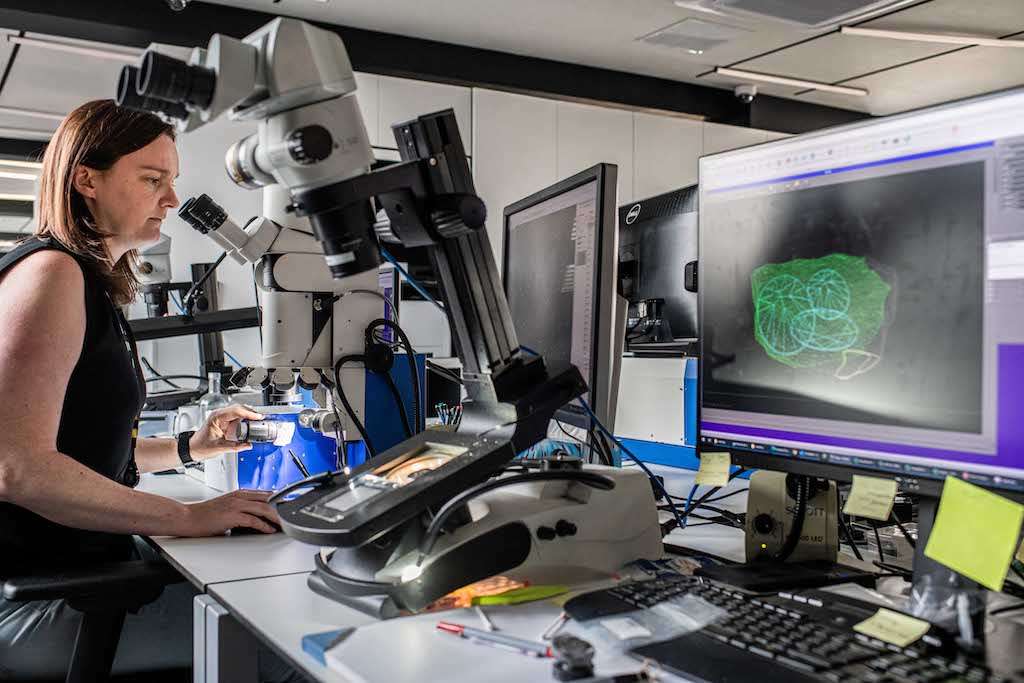
“The idea is really to create a unique ecosystem with unique members of the community—all of them are sharing the same values, and they can actually interact between them,” Papismedov says.
Signum
That vision has also led HB Antwerp to take things a step further, with the launch of Signum, a luxury retail experience where bespoke jewelry will be crafted from rough diamonds selected by the consumer. The website is expected to go live later this year, and there’s a physical shop in the works for Antwerp. When Ethos met with Papismedov in March, he was scouting locations in Los Angeles for another shop loosely slated for 2023.
Once the stone is decided on, the polishing and build of the jewelry will take an average of 3 to 4 months, but in some cases, it could be closer to a year, Papismedov says, depending on the size. Leaning into the company’s blockchain and the digital tools that go into its sourcing processes, each Signum purchase will also come with an NFT. Their first NFTs last year—a dozen ‘digital bunnies’—sold out in under three minutes at $10,000 each.
There’s something else that’s happening, too as a result of HB Antwerp and Signum’s work: a deeper understanding and consumer appreciation for rough diamonds. Few people see diamonds this way outside of the miners, traders, and polishers. A diamond in its natural state speaks to the shift in consumer habits, and wanting that connection to the earth in more meaningful ways.
“And I can tell you, a lot of people will come [to Signum] and will see the rough diamond and decide not to polish it. They’ll say ‘I want it like that. I want to design an amazing frame around it. And I want to keep it as a piece of art’,” Papismedov says. “And it is. It’s Mother Nature’s most incredible art.”

